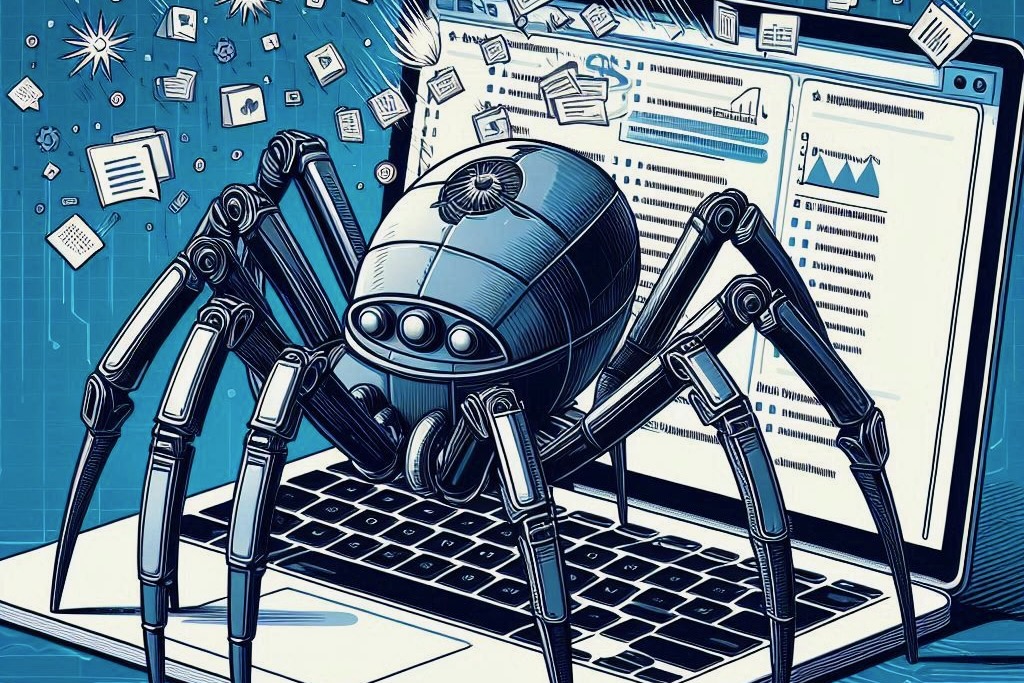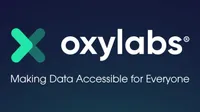From training LLMs to getting real-time data for custom GPTs and RAG, everyone is turning to scraping: Here's why
Web scraping is taking over the world. Really, it is.

In artificial intelligence (AI), it’s clear that data is critical. The growing interest in Large Language Models (LLMs) like GPT (Generative Pre-trained Transformer) and RAG (Retrieval-Augmented Generation) emphasizes the crucial role of vast and diverse datasets in training these powerful AI models. As these models become more complex and capable, the need for fresh, varied, and real-time data increases significantly. This is where web scraping comes in. It has become essential for collecting the vast amount of data needed for AI development, especially in training LLMs and customizing GPTs and RAG models.
GPT-3 and similar large language models have revolutionized what machines can do with language. They can write coherent and contextually relevant text and even generate programming code. These models learn from many text data, finding patterns and making connections between words, phrases, and ideas. The only issue is that they need a lot of data. The more varied and extensive the dataset, the more detailed and accurate the model’s output. This need has increased interest in web scraping as an efficient way to gather data from the vast and constantly changing internet.
Custom GPT models, tailored for specific industries or tasks, require unique datasets that may not always be readily available. For example, a model intended for legal research may require extensive case law and statutes. At the same time, a medical GPT could benefit significantly from access to current research papers and clinical trial data. Additionally, real-time data is crucial to keep these models current, whether for financial forecasts, trend analysis, or real-time recommendations. Web scraping allows for the systematic collection of targeted and timely data, enabling the training of more specialized and current models.
RAG models take the capabilities of LLMs a step further by generating text based on what they have learned during training and incorporating new information fetched in real time during the generation process. This feature makes them incredibly powerful for applications that require up-to-the-minute data, such as news generation, real-time market analysis, or personalized content creation. Therefore, the dynamic nature of RAG models intensifies the need for efficient web scraping techniques to feed these AI systems a constant stream of fresh data.
Oxylabs is an ethical proxy network provider offering over 100 million proxies in 195 countries. It specializes in residential, data center, and mobile proxies, helping businesses gather data at scale while ensuring privacy and compliance. New customers can take advantage of this deal by signing up to Oxylabs today. Use code TECH20.
What is web scraping?

Web scraping, also known as web harvesting or web data extraction, is the process of obtaining data from websites. It involves sending HTTP requests to the desired web pages, downloading them, and then using algorithms to extract specific information from them. This data is often saved to a local file or a database, depending on the intended use. Web scraping is a powerful technique that enables individuals and businesses to efficiently collect and analyze large amounts of data from the web.
While web scraping is powerful, it's crucial to approach it ethically and legally. Many websites have terms of use that prohibit automatic data retrieval, and different countries have laws governing data privacy and security. Moreover, excessive scraping can adversely affect the performance of the target website, making ethical practices and respect for the website's rules paramount.
Everyone is turning to scraping: Here's why
Accessibility to exclusive data
The internet is a treasure trove of information, much of which is not readily available in neatly packaged datasets. Web scraping empowers developers and researchers to access this vast, exclusive data, transforming it into structured formats suitable for training AI models. Web scraping involves extracting data from websites and converting it into a usable format, allowing for analysis and further processing.
Sign up to the TechRadar Pro newsletter to get all the top news, opinion, features and guidance your business needs to succeed!
This process enables the collection of specific data points or information from various sources on the internet, providing valuable insights and fueling innovation in different fields.
Cost-effectiveness
Compared to traditional methods of data collection, such as manual data entry and surveys, web scraping is remarkably cost-effective. It allows for the automation of data collection over wide scales and diverse sources, significantly reducing the manpower and time required. Web scraping can efficiently gather data from various websites, online databases, and other online sources, providing a comprehensive and up-to-date dataset for analysis and decision-making.
This modern approach not only saves time and resources but also enhances the accuracy and reliability of the collected data.
Competitive edge
In the fast-paced world of AI, staying ahead means having the most current data to inform your models. Web scraping enables businesses and developers to maintain a competitive edge by constantly updating their models with the latest information. Web scraping involves automating the extraction of data from websites, allowing for the collection of real-time data from various online sources.
This process can provide valuable insights and help in making informed decisions, ultimately contributing to the success of AI applications and models.
Customization and flexibility
Web scraping is a technique that enables the extraction of specific data from various sources, including web pages, in different formats and structures. This extracted data can create custom datasets tailored for specific AI models used in niche applications.
This approach provides the flexibility to gather information most relevant to the AI models' specific requirements, thereby improving their performance in specialized tasks and applications.
Ethical and legal considerations
While web scraping has immense benefits, it's imperative to navigate the ethical and legal landscapes carefully. This means respecting website terms of service, adhering to copyright laws, and ensuring data privacy protocols are followed. Ethical data collection practices protect against legal repercussions and build trust in AI technologies.
The future of AI development and web scraping

The symbiotic relationship between AI development and web scraping will strengthen in the coming years. As AI models advance and become more sophisticated, we can expect to see a corresponding evolution in the methodologies and technologies for web scraping. This will introduce more efficient, ethical, and sustainable ways to fulfill the growing data demands of the future. Innovations in machine learning algorithms specifically designed for web scraping, improved data anonymization techniques to protect user privacy, and advancements in understanding the legal frameworks of data collection are just some of the developments we can anticipate.
These advancements will enhance AI's capabilities and contribute to a more responsible and compliant approach to web data extraction.
- See which industries will rely on web scraping in 2025.
Summary
Web scraping is crucial for collecting data and developing AI. It is critical in training language models, customizing GPTs, and providing real-time data for RAG models. Web scraping harnesses the vast resources of the internet for AI training. However, as we move forward, we must prioritize ethical, respectful, and legal data collection practices. The goal is not just to create more powerful AI models but to do so in a way that respects privacy ensures data security, and has positive societal implications. As the landscape evolves, web scraping will continue to be integral in creating more intelligent and responsive AI systems.
TechRadar Pro created this content as part of a paid partnership with Oxylabs. The content of this article is entirely independent and solely reflects the editorial opinion of TechRadar Pro.
Bryan M. Wolfe is a staff writer at TechRadar, iMore, and wherever Future can use him. Though his passion is Apple-based products, he doesn't have a problem using Windows and Android. Bryan's a single father of a 15-year-old daughter and a puppy, Isabelle. Thanks for reading!

